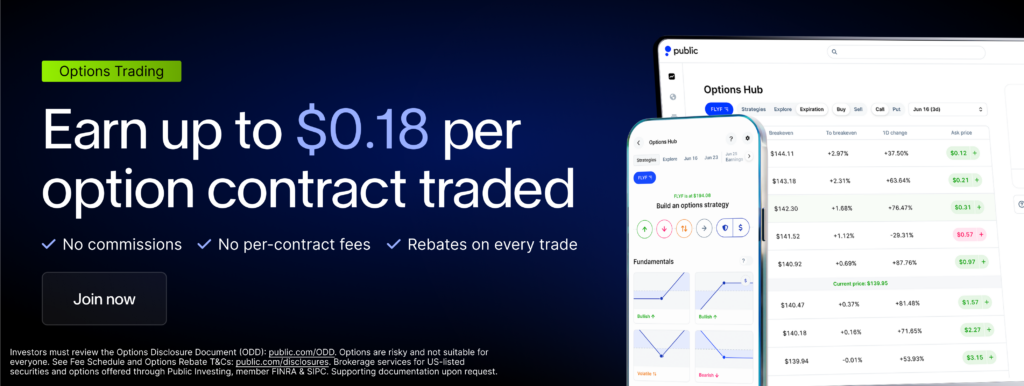In the fast-paced realm of trading, the ability to magnify profits is a sought-after advantage. Trading options on margin may offer this advantage, yet with this advantage comes associated risks of magnifying losses. With such leverage, understanding margin requirements becomes pivotal to adeptly navigating options trading. This guide aims to demystify options margin requirements, providing traders the essential knowledge to manage risks and rewards adeptly. Whether a seasoned trader or a newcomer to options trading, understanding margin requirements is key to making well-informed decisions amidst market volatility.
Options Margin Requirements: What Traders Need to Know

Table of Contents
What is Option Margin?
Option margin is a pivotal concept in options trading. It refers to the amount a trader needs to deposit with a brokerage to cover potential losses on option positions. This margin acts as collateral, ensuring traders can cover losses.
Options trading is leveraged, allowing traders to manage more securities with less capital. Using this leverage means both potential gains and losses can be magnified. Margin requirements are set by brokers to mitigate associated risks.
Let’s explore how margin requirements vary for different types of options:
-
Call Options: Buying a call option requires paying the premium, with no additional margin needed. However, selling call options invokes margin requirements to cover potential losses.
-
Put Options: Like call options, buying a put only requires paying the premium. Selling or writing put options triggers margin requirements.
Margin in options trading is categorized into initial margin and maintenance margin:
-
Initial Margin: The amount a trader deposits with their broker when opening a position.
-
Maintenance Margin: The minimum account balance required to keep the position open.
Understanding option margin is instrumental for traders, aiding in informed decision-making and adherence to regulatory and brokerage frameworks.

How Are Margin Requirements Calculated?
Margin requirements in options trading are influenced by several factors. They determine the capital a trader needs to enter and maintain positions. Here are the critical factors and simplified examples to explain margin requirement calculations for various options.
Factors Affecting Margin Calculations
-
Implied Volatility: Indicates expected price fluctuation of an asset. Higher implied volatility often leads to higher margin requirements.
-
Asset Price: As the asset price increases, margin requirements usually increase as well.
-
Option Type and Strike Price: These also influence margin requirements. Out-of-the-money options generally have lower margin requirements than in-the-money options.
-
Contract Size: Typically, a standard option contract represents 100 shares.
-
Expiration Date: Longer expiration dates may result in higher margin requirements, given the increased time for potential price fluctuations.
Simplified Margin Requirement Examples:
-
Example 1: Writing a Call Option
Consider a hypothetical scenario where you’re writing a call option on Stock XYZ, priced at $50, with a strike price of $55 and a premium of $2 per contract. Initial margin might be 20% of the contract value, i.e., 20% of ($55 x 100 shares) = $1,100.
-
Example 2: Writing a Put Option
Consider a hypothetical scenario where you’re writing a put option on Stock ABC, priced at $30, with a strike price of $25 and a premium of $1 per contract. Initial margin might be 20% of the contract value, i.e., 20% of ($25 x 100 shares) = $500.
Consulting with brokers to understand specific margin requirements is imperative for making informed trading decisions.

How to Manage Options Margin?
Effective management of options margin is central to a successful trading journey. It encompasses understanding margin requirements, monitoring positions, and acting wisely to prevent or address margin calls. Here are key strategies for managing options margin:
-
Understand Margin Requirements Thoroughly: Familiarize yourself with both initial and maintenance margin requirements from your broker.
-
Regular Monitoring of Your Positions: Keep track of your positions and ensure your account balance stays above the maintenance margin level.
-
Employ Risk Management Strategies: Use stop orders as a strategy to mitigate potential losses, and consider diversifying your portfolio. It’s advisable to seek guidance from your financial advisor.
-
Maintain Adequate Capital Reserves: Keep extra capital in your account to cover unforeseen market movements.
-
Respond Promptly to Margin Calls: Act quickly by either depositing more funds or closing positions to meet margin requirements.
-
Educate Yourself Continuously: Stay informed on current market conditions and familiarize yourself with best practices for managing margin, given the unpredictable nature of markets.
Taking a methodical approach to understanding and managing options margin can help traders navigate the market more effectively, while being mindful of its inherent risks.
Conclusion
Trading options on margin is a journey filled with both challenges and opportunities. Understanding and managing margin requirements is essential for informed and resilient trading practices. However, traders should remain cautious due to the inherent market risks. Continuous education and prudent risk management are vital for navigating the financial markets successfully, turning potential risks into rewarding experiences.